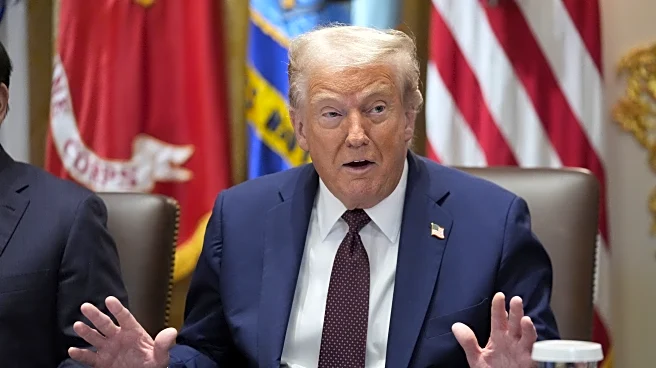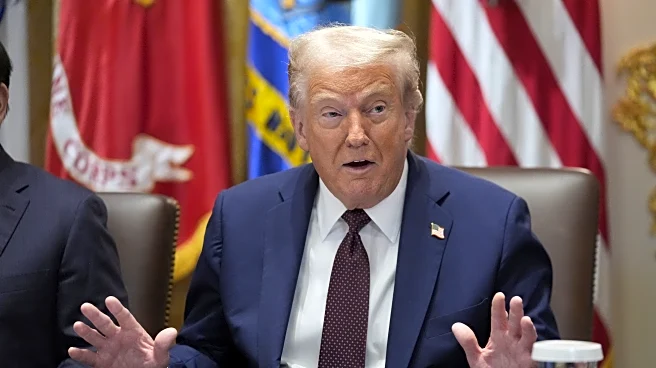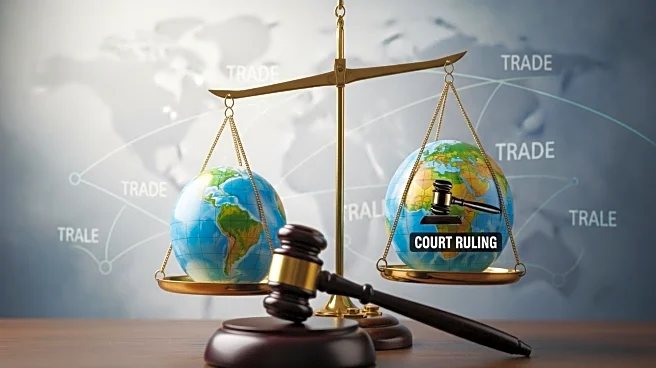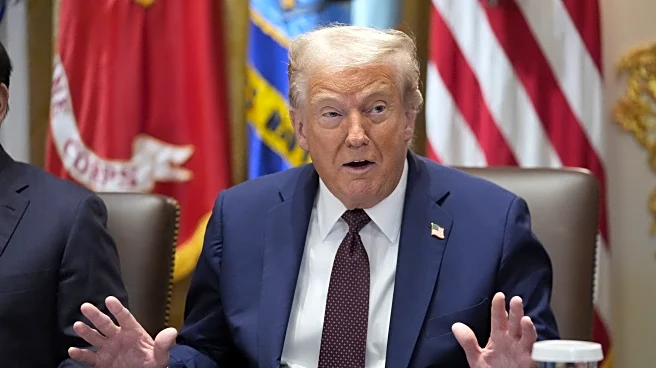What is the story about?
What's Happening?
In 2025, President Trump's tariff policies have significantly altered the U.S. trade landscape, raising the effective tariff rate to 18.3%, the highest since 1934. This increase has resulted in an average annual cost of $2,400 for U.S. households due to higher prices on consumer goods such as clothing and footwear. Legal challenges have emerged, with courts ruling that tariffs based on the International Emergency Economic Powers Act (IEEPA) are illegal, potentially leading to a reduction in the tariff rate from 15.8% to 6.4%. The Supreme Court's decision on these tariffs could reshape global trade norms, affecting sectors like manufacturing, agriculture, and logistics.
Why It's Important?
The economic impact of these tariffs is substantial, with J.P. Morgan estimating a potential 1.1% GDP loss due to tariffs and retaliatory measures from countries like China, Canada, and the EU. Middle-income households could face a $22,000 lifetime income erosion, highlighting the regressive nature of tariffs. The uncertainty surrounding these tariffs has disrupted supply chains and complicated capital allocation for businesses and investors. Sectors less exposed to trade volatility, such as technology and healthcare, may offer more stability, while companies benefiting from nearshoring trends could outperform.
What's Next?
The Supreme Court's ruling on the legality of these tariffs will be pivotal, potentially leading to more reciprocal trade frameworks or emboldening future unilateral actions. Investors and businesses must remain agile, leveraging data-driven strategies to navigate the evolving trade environment. Monitoring legal developments and adjusting investment portfolios to mitigate risks from potential trade wars will be crucial.
Beyond the Headlines
The long-term costs of these tariffs, both legal and economic, are mounting, creating a world where policy uncertainty is the new normal. The administration's focus on revenue gains and protectionist wins may overlook the broader implications for global trade norms and economic stability. Adaptability and strategic planning will be essential for businesses and investors to capitalize on emerging opportunities while shielding against downside risks.
AI Generated Content
Do you find this article useful?















